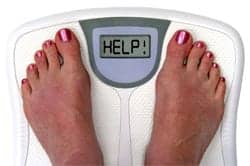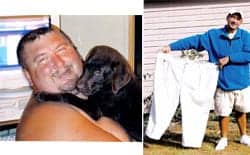 |
The Spartanburg Regional Medical Center, Spartanburg, SC, is a bariatric surgery center of excellence, which is accredited by the American Society for Bariatric Surgery (ASBS). Much like the accreditation standards of the American Academy of Sleep Medicine (AASM), ASBS accreditation requires very strict standards of care of bariatric surgery patients. Early in the development of the medical center’s surgical weight loss team, Shari Angel Newman, RPSGT, manager of sleep services at Spartanburg Regional Medical Center, met with the sleep services team to develop interdisciplinary procedures and processes to meet the very challenging needs of patients. The team realized they had a lot to learn. Newman reveals how the team adapted to better serve obese patients.—Ed.
BACKGROUND
Today, an increasing number of morbidly obese patients are turning to bariatric surgery to help them lose weight. A large percentage of these patients have obstructive sleep apnea and other comorbidities that increase their risk of postoperative complications and even death. The risk of apneic-related complications, during postoperative care and throughout the course of weight loss, can be minimized with proper diagnosis and treatment prior to surgery.
According to the National Sleep Foundation (NSF), more than 18 million Americans have sleep apnea.1 Obesity is the single largest risk factor for developing obstructive sleep apnea (OSA). This additional weight is particularly a risk in the abdominal and neck areas. The NSF 2005 Sleep in America poll found that nearly 60% of the respondents reported being obese and thus were at a high risk for developing OSA. Current research suggests one in three Americans is obese with an estimated 300,000 deaths each year linked to obesity.
Morbid obesity is defined as having a Body Mass Index (BMI) of 40 or more. This equates to being approximately 100 pounds overweight. The Centers for Disease Control and Prevention reports the near doubling of morbid obesity in the United States from 2.9% in 1988-1994 to 4.7% in 2000. Current reports estimate that more than 9 million adult Americans suffer from morbid obesity.2
Weight loss surgery is currently considered the most effective treatment for morbid obesity.2 According to the American Society for Bariatric Surgery, an estimated 170,000 surgical procedures for weight loss were performed in 2005. This is a dramatic increase from the 72,000 procedures performed in 2002.3 It is estimated that as many as 75% of these patients also have obstructive sleep apnea.
There are always risks to any surgical procedure. The risks are much more significant with the compromised airway of an apnea patient. Possible complications for an OSA patient having bariatric surgery include cardiac arrhythmia, cardiovascular accident or stroke, congestive heart failure, oxygen starvation, heart attack, and death. Proper testing prior to surgery, along with careful treatment before, during, and after surgery, can minimize these postoperative complications. Furthermore, maintenance of the airway will aid in healing and the associated weight loss the surgery is intended to facilitate.
PREPARATION
To meet the needs of bariatric patients, the Spartanburg Regional Medical Center started with sleep center facilities, staff, and testing processes. Our sleep staff received training in “bariatric sensitivity,” and we quickly recognized that testing these patients would involve much more than getting larger effort belts. Consideration of all aspects of the bariatric patients’ stay with us had to be examined. We started with reviewing the basic structure and components of the testing bedrooms.
We have two sleep centers for testing. One center is located in an upscale hotel located one and a half miles from our hospital campus. All patients cared for at the center must be ambulatory and able to “self-preserve.” That center is on the seventh floor of the hotel, and in the event of an emergency, our patients must be able to evacuate on their own. Our other center is located on the main campus of our hospital and is adjacent to our intensive care units. We are careful to put patients with limited mobility and significant medical concerns at our main sleep center for testing.
 |
| Shown before and after bariatric surgery, patient Matthew Brew Dunaway was tested at Spartanburg Regional Sleep Center. |
Bed size and maximum weight level of support are essential. In our main center, we have a queen-sized standard bed and regular hospital beds. Our standard hospital beds facilitate use by patients weighing less than 400 pounds. To use the queen-sized bed, additional support is needed. We also need to have a hospital bed available for those who require one. We found that many of our bariatric patients slept in recliners or propped up on many pillows to help their breathing so we need to meet that need as well. To further meet the needs of bariatric patients, our hotel center has a handicapped accessible room with a specially supported queen-sized bed. Also, wedge pillows were purchased to help patients who need to sleep propped up.
Bedside chairs in our patient rooms need to accommodate significant weight and space for patients with increased girth. They need to be stable and not slide or be easily tipped. Arms for these chairs also are a concern. While for many, the arms would be a big help in getting up and down, they would need to be strong enough to hold up to that significant force.
The shower in our main center is handicapped accessible but not bariatric accessible. It was not meant for use by larger than average patients. The same limits were found for our toilets. They are not meant for patients who weigh more than 500 pounds—some of our bariatric patients exceed that amount. Fortunately, our designated bariatric room at our hotel-based center is built for—and could accommodate—a larger or handicapped patient.
Both of our sleep centers meet all requirements for door size, space, and accessibility set by the South Carolina Department of Health and Environmental Control, the AASM, the Joint Commission on Accreditation of Healthcare Organizations, and the Occupational and Safety Administration. This was an area we felt we were well prepared for.
PATIENT SAFETY
Once we examined our testing space, we moved to patient safety. First, the patient had to be able to get to our hospital center safely. We did a walk-through from the front door of our facility through the lobby and up the elevator to our testing bedrooms to look at the route through the eyes of these patients. We quickly realized mobility for our bariatric patients was a concern. Our hospital sleep center is on the sixth floor of our facility. As we tested our patients preoperatively and at their largest size, we knew many would be limited in their ability to walk or transfer from the chair to the bed. We would need larger than average wheelchairs to be available for our patients who could not walk or were limited in the distance they could walk. We acquired a walker for our patients’ use, and we checked to assure that larger stretchers could be brought into and used in our center.
Strict safety criteria were developed for selecting which patients could be tested at our main sleep center and which could be tested at our hotel center. Patients with limited mobility, significant cardiac concerns, recent history of seizure, MRSA (methicillin-resistant Staphylococcus aureus), or other conditions would be tested in our hospital facility. As our hospital-based patients had a higher level of acuity of care needs, staffing ratio would be reduced to better care for these patients.
Many of our bariatric patients are diabetic, and all are instructed to bring with them their diabetic testing devices and supplies so their blood sugar levels can be checked as needed. Patients also are encouraged to bring a bedtime snack if that is their usual bedtime habit, though caffeine is not to be included.
We identified the need for lift training. This would help our staff assist these patients and move and transfer them safely. It also would help our staff to avoid injury in moving our bariatric patients. (Our hospital is currently moving to a minimal lift environment with the use of additional assistive devices as well as increased education to develop critical thinking strategies in the mobilization of the bariatric patient.)
Unfortunately, respiratory and cardiac emergencies are always a possibility with any apnea patient. We checked our crash carts, backboards, ambu-bags, and masks to assure that they all would accommodate the needs of larger patients.
At this point, we felt we were prepared to get our bariatric patients into our center, and that they would be safe in our care. We then looked at patient comfort because we knew if the patient was uncomfortable and unable to sleep, we would be unable to help.
Most of the bariatric patients we spoke to felt that a cool room was essential for them to sleep well. Many regularly used a fan while sleeping. Our bedrooms have individual thermostats so we could cool the room fairly well, but we also purchased fans with variable speeds for our patients’ use. These had to be approved by our hospital’s electrical department for safety. Lightweight sheets were kept on hand as well as large hospital gowns for patients.
TREATMENT
Following polysomnography, most of our bariatric OSA patients are treated with CPAP or bilevel positive airway pressure. Treatment is closely monitored, and all patients are contacted during the first 48 hours after initiation of care, and again at 1 week, 1 month, and 6 months on PAP. As with all PAP users, changes in masks may be needed as well as pressure, ramp, and humidification changes. Compliance and auto-adjust-capable devices also may be used.
To be considered for bariatric surgery in our hospital, patients are interviewed extensively by our program coordinator for regional surgical weight loss, Dianne Smith, RN, MSN. As a gastric bypass patient, she has lost 150 pounds, and as a nurse, she fully understands the relationship between obesity, bariatric surgery, and obstructive sleep apnea. In 2002, when our bariatric program began, we met frequently to plan for our patients’ care. We could not find definitive guidelines on the care of these patients with PAP, especially in the immediate postoperative period, and were frankly unsure of when to put them on PAP, how much pressure should be used, and if we would damage the fresh sutures of the surgery.
We began by using trend oximetry and auto-adjusting PAP devices. With experience, we have discovered that the biggest difference in success is the length of time that PAP has been in use prior to surgery. Those using PAP successfully for more than 6 months before surgery tend to do well with it immediately postoperatively and beyond. New or poorly compliant PAP users are more difficult to treat.
Since 2002, our bariatric center has performed more than 350 surgical procedures for weight loss. Smith estimates that more than 70% of those have sleep apnea. Her initial interview questions are regarding the patient’s sleep: Have they been diagnosed with OSA? If so, what treatment is utilized? If not diagnosed, how well do they sleep? Do they snore? Results of an Epworth Sleepiness Scale are obtained, and polysomnography is ordered if sleep disturbance, sleepiness, or snoring is identified.
Patients with OSA are instructed to bring their PAP masks, headgear, and pressure settings with them when they come to the hospital for surgery so that PAP can be administered from the recovery room and onto the floor. The length of stay for most bariatric patients is 3 days, and they are sent home with directions to continue PAP use. Weight loss is usually quite dramatic in the first few months, and smaller masks may be needed to continue with PAP. Patients are encouraged to stay in touch with their sleep physician as needed, and at their 6-month follow-up with their bariatric surgeon, they are encouraged to be reassessed by their sleep physician if that has not already been done. Additional sleep testing and PAP adjustments may be necessary as patients lose weight and move toward their ideal body weight.
As our population gets larger, bariatric surgery and OSA are becoming more widespread. Successful treatment of our sleep patients through this surgery can be done with good planning, processes, and facilities, and quality care.
Shari Angel Newman, RPSGT, is manager of sleep services at Spartanburg Regional Medical Center, Spartanburg, SC. She can be reached at .
REFERENCES
- National Sleep Foundation 2005 Sleep in America Poll. Available at: www.sleepfoundation.org.
- American Obesity Association. AOA Fact Sheets. Available at: www.obesity.org.
- American Society for Bariatric Surgery Review. February 2006. Re: Gastrointestinal Surgery for Severe Obesity. Consensus Statement, NIH Consensus Development Conference, March 25-27, 1991. Available at: www.asbs.org.



